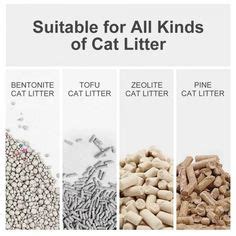Introduction
Cat litter dust can be a major problem for cat owners and their furry friends. The fine particles of clay or other materials used in traditional cat litter can become airborne and irritate the respiratory systems of both cats and humans. In addition, litter dust can track throughout the home, creating a mess and making it difficult to keep the floors clean.

Fortunately, there are a number of ways to reduce cat litter dust. By taking a few simple steps, cat owners can create a healthier and more comfortable environment for their pets and themselves.
Causes of Cat Litter Dust
The primary cause of cat litter dust is the friction between the litter particles as they are moved around by the cat. This friction creates fine particles that can become airborne and irritate the respiratory system. In addition, some types of litter, such as clay litter, are more likely to produce dust than others.
Other factors that can contribute to cat litter dust include:
- The type of litter box used
- The frequency with which the litter box is cleaned
- The number of cats using the litter box
- The size of the litter particles
Health Effects of Cat Litter Dust
Cat litter dust can irritate the respiratory systems of both cats and humans. In cats, litter dust can cause coughing, sneezing, and wheezing. In humans, litter dust can cause similar symptoms, as well as eye irritation and skin irritation.
In some cases, cat litter dust can also trigger asthma attacks in people who are allergic to cats.
How to Reduce Cat Litter Dust
There are a number of ways to reduce cat litter dust, including:
- Using a dust-free litter. There are a number of dust-free litters available on the market. These litters are typically made from larger particles that are less likely to produce dust.
- Using a covered litter box. A covered litter box can help to trap litter dust and prevent it from becoming airborne.
- Cleaning the litter box regularly. Cleaning the litter box regularly will help to remove any accumulated dust and prevent it from becoming airborne.
- Placing the litter box in a well-ventilated area. Placing the litter box in a well-ventilated area will help to circulate the air and prevent litter dust from building up.
- Using a litter mat. A litter mat can help to trap litter dust and prevent it from tracking throughout the home.
Transitioning to a Dust-Free Litter
If you are currently using a traditional clay litter, you may be wondering how to transition to a dust-free litter. The best way to do this is to gradually mix the new litter with the old litter over a period of several days. This will help your cat to get used to the new litter and prevent any digestive upset.
Once you have completely switched to a dust-free litter, you should notice a significant reduction in the amount of dust in your home.
Conclusion
Cat litter dust can be a major problem for cat owners and their furry friends. However, by taking a few simple steps, cat owners can create a healthier and more comfortable environment for their pets and themselves.
FAQs
1. What is the best way to reduce cat litter dust?
The best way to reduce cat litter dust is to use a dust-free litter, a covered litter box, and a litter mat. You should also clean the litter box regularly and place it in a well-ventilated area.
2. Are there any health benefits to using a dust-free litter?
Yes, using a dust-free litter can help to reduce respiratory irritation in both cats and humans.
3. How often should I clean the litter box?
You should clean the litter box at least once a day, or more often if you have multiple cats.
4. Where should I place the litter box?
The litter box should be placed in a quiet, private area that is easily accessible to your cat.
5. What type of litter box is best for reducing dust?
A covered litter box is the best for reducing dust.
6. What type of litter is best for reducing dust?
A dust-free litter is the best for reducing dust.
7. How can I tell if my cat is allergic to litter dust?
If your cat is allergic to litter dust, they may experience coughing, sneezing, wheezing, eye irritation, or skin irritation.
8. What should I do if my cat is allergic to litter dust?
If your cat is allergic to litter dust, you should talk to your veterinarian about the best course of treatment.





















